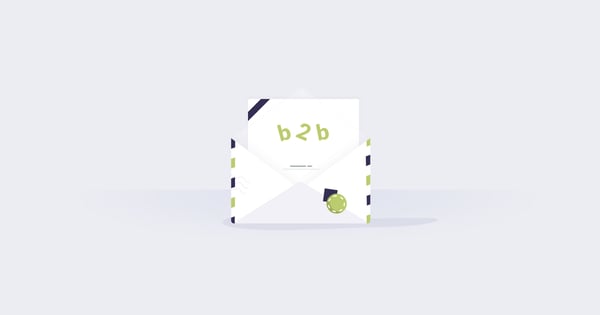Email continues to be a go-to marketing channel for most B2B brands, with 81 percent using it within the last 12 months.
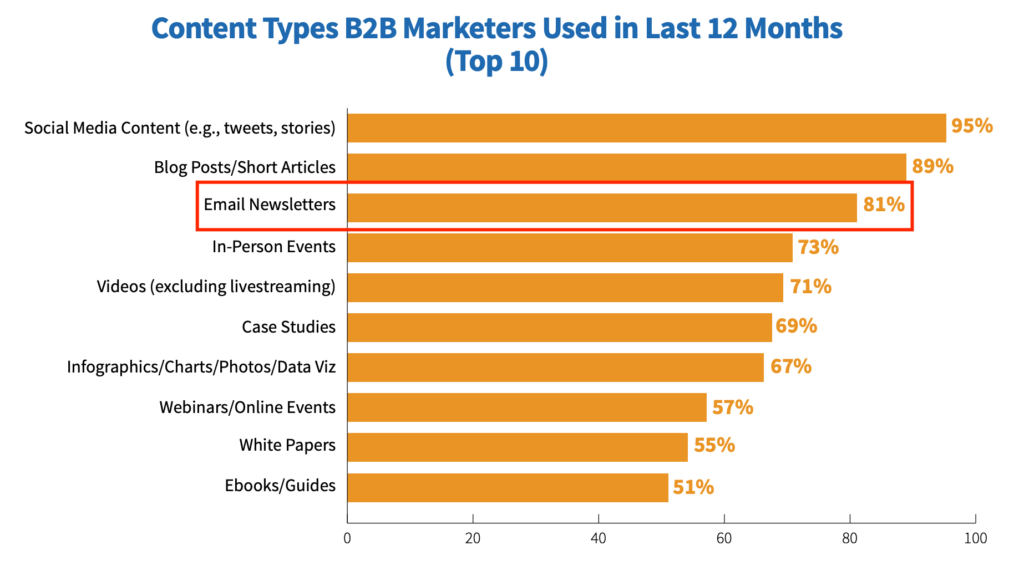
And when it comes to providing a framework for effectively nurturing leads, it was ranked number one.
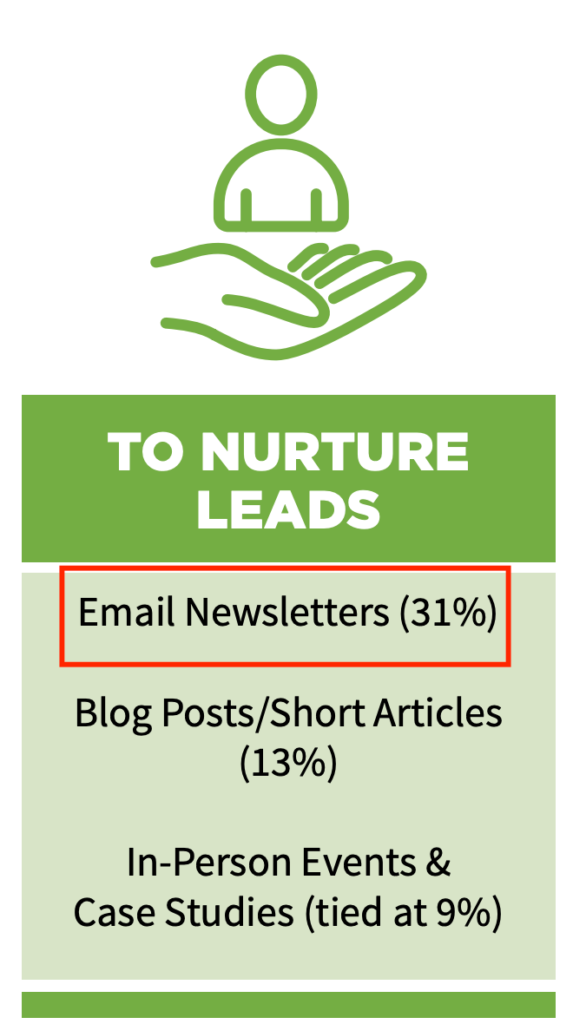
But here’s the thing.
You can’t just slap together a B2B newsletter and expect to have massive success.
Nope, you need to understand the fundamentals and follow the right formula—one which has been proven time and time again to get results.
To get your campaign firing on all cylinders, here’s a list of B2B email marketing best practices, along with real-life examples so you can see them in action.

7 B2B Email Marketing Best Practices You Should Follow
1. Use a Subject Line Between 28 and 50 Characters
Since having a catchy, attractive subject line is a necessary precursor to getting an email opened, this is the first thing you need to master.
One of the most critical elements of writing a winning subject line is simply to make it the right length.
There has been a boatload of different studies done on this, but recent data from Campaign Monitor found that somewhere between 28 and 50 characters is the optimal length.
More specifically, they recommend starting with shorter subject lines ranging from 28 to 39 characters, as this is ideal for catering to mobile users with limited screen real estate.
Given that nearly half (46 percent) of emails were opened on mobile in 2020, this is definitely important.
To give you an idea of what this looks like, here’s an example from Trello with 31 characters.
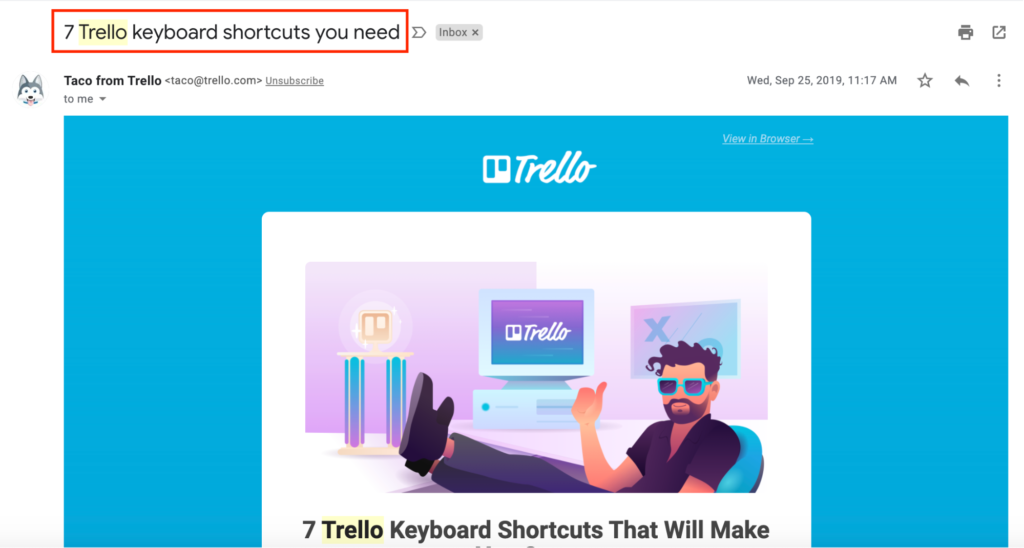
Campaign Monitor also references a study by Brian Dean of Backlinko that found slightly longer subject lines with 36 to 50 characters got the highest response rate.
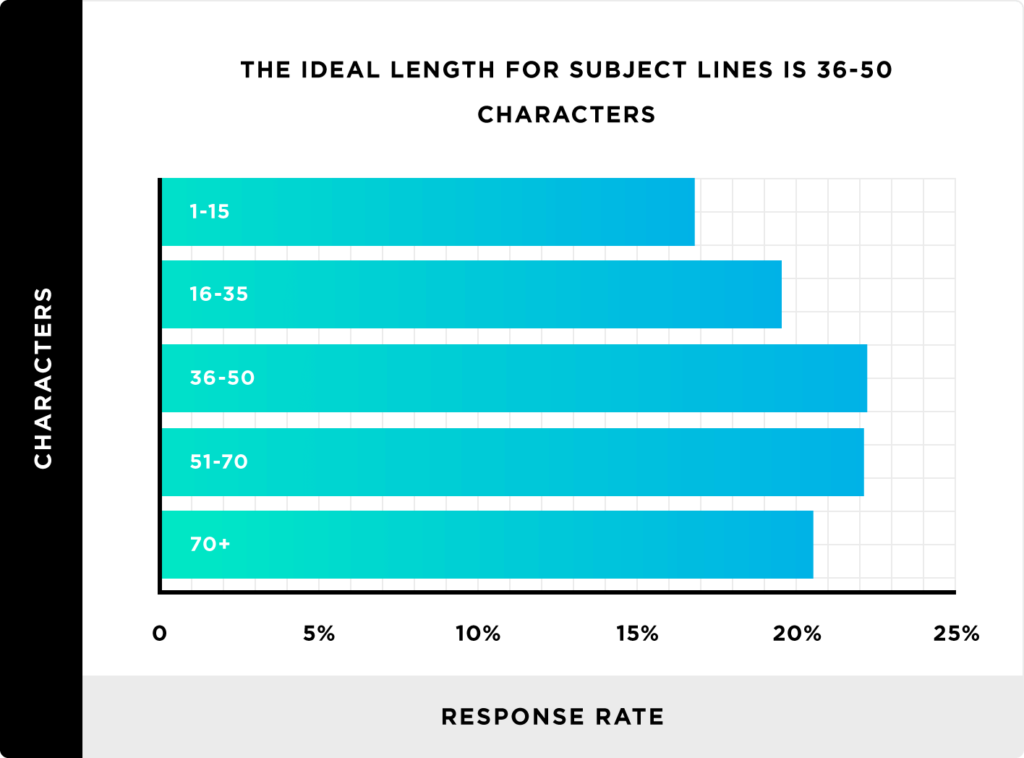
Here’s an example of one that’s 36 characters.
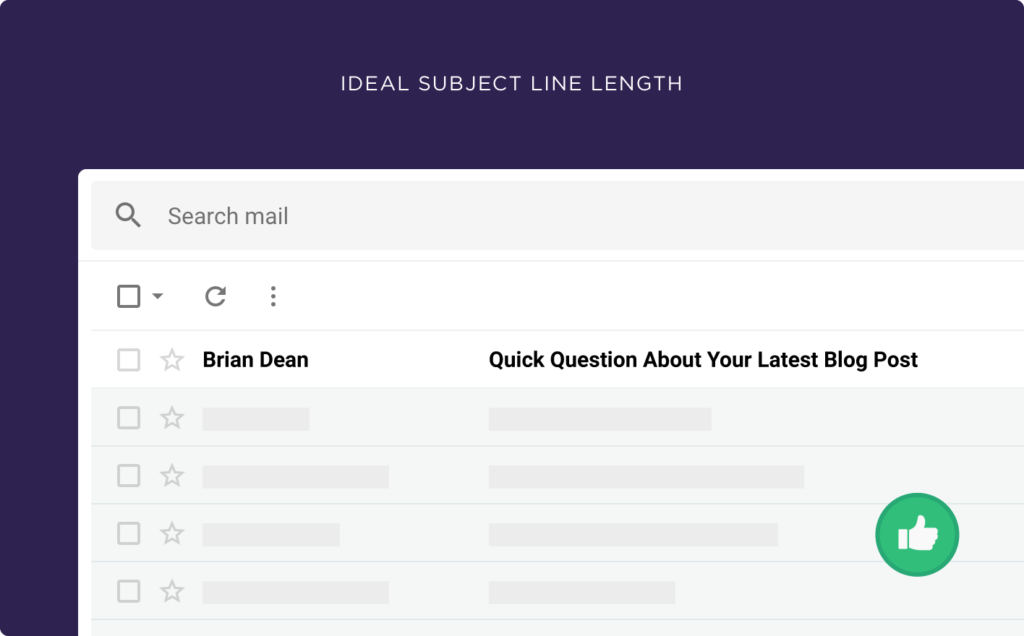
My suggestion is to stay on the shorter end of the spectrum initially and then test out some longer subject lines later on to see which ones perform the best.
Once you find the right range, stick with it.
2. Personalize the Heck Out of Your B2B Emails
“Personalization is the top strategy for 47 percent of B2B marketers in 2020,” explains 99 Firms.
It’s a technique that’s applied to virtually every aspect of marketing, and email is certainly no exception.
With click-through rates increasing by an average of 14 percent and conversions by an average of 10%, using personalization in B2B emails is a no-brainer.
And of all the best practices, this is arguably the most important.
That’s why you’ll always want to have a “personalize, personalize, personalize” mindset and ensure every email you send is completely tailored to the individual reader that receives it.
So, what are some specific ways to personalize your B2B emails?
One is to take a one-to-one approach like legal service platform, The Expert Institute, did.
Rather than sending out generic emails, they created a campaign where they sent out a personalized email from George Cuchural, their vice president of client relations.
Here’s what it looked like.
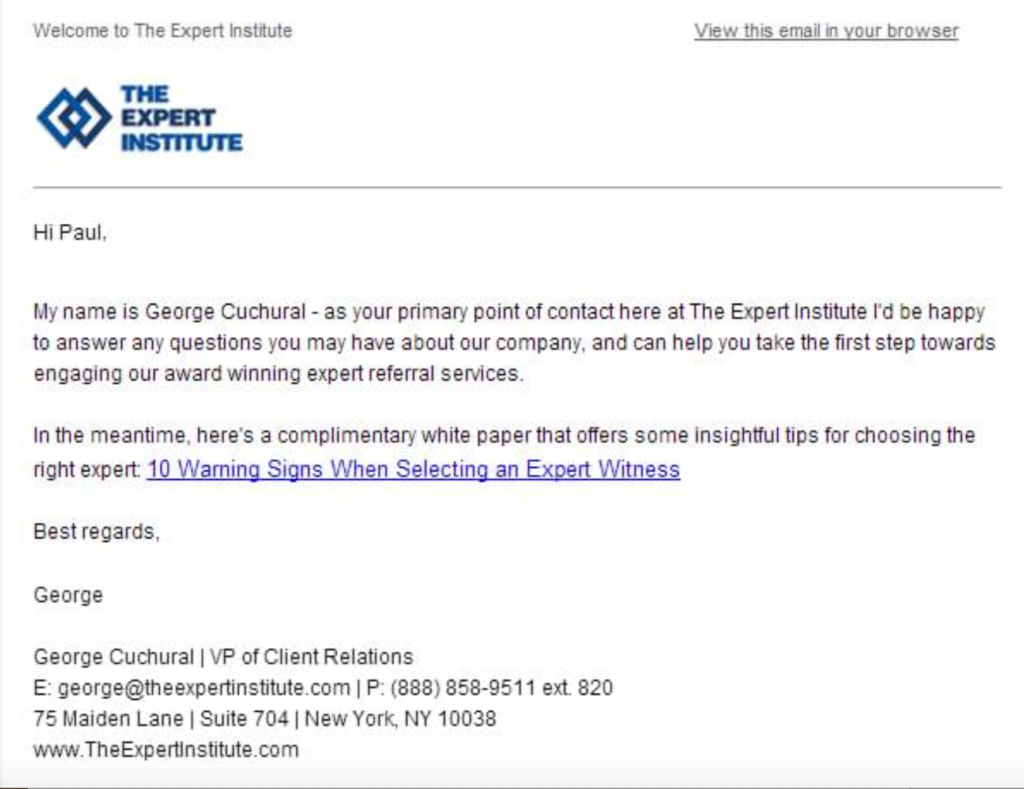
Notice that they start off by addressing the reader by name—something they ensured was correct by periodically cleaning their database.
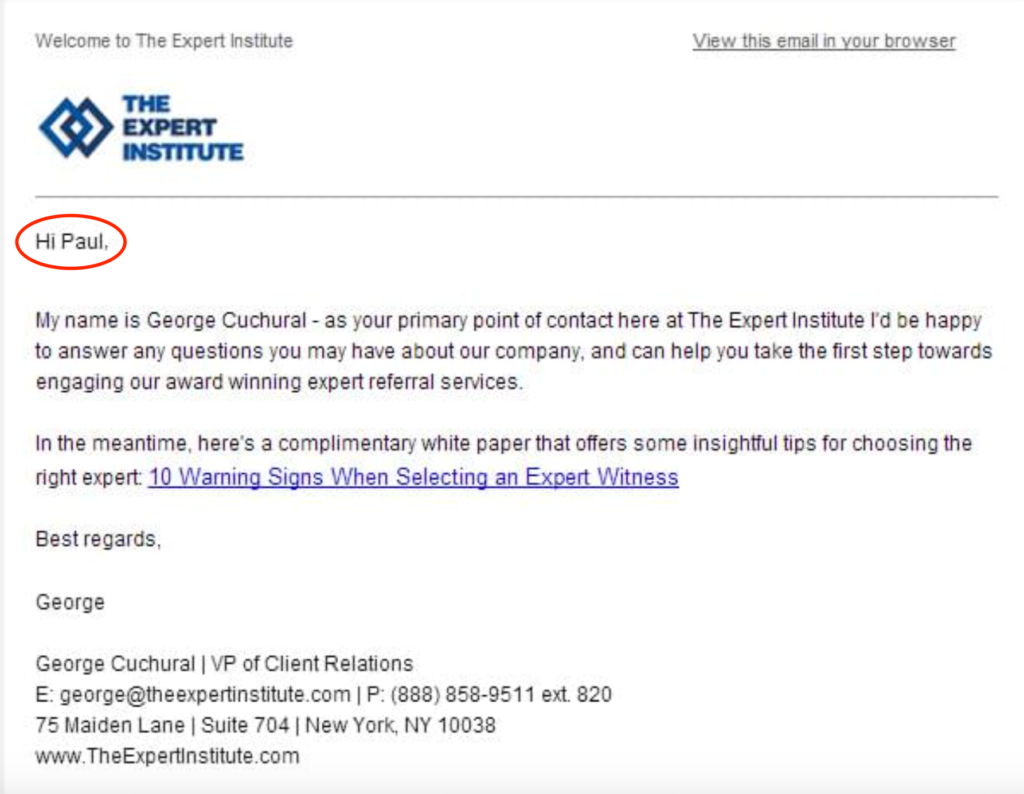
Then, the email lets the reader immediately know that it’s from George and that he’ll be their primary point of contact.
From there, it projects a feeling of warmth, letting the reader know that he’s available to answer any questions they may have.
I think this type of email is a great way to get the ball rolling with new leads and offers a level of personalization that many others are lacking.
It’s perfect for building instant rapport and letting leads know they’re not viewed as “just another number” but instead are highly valued.
Another great example is this one from emfluence Digital Marketing where they recognize a reader for reaching a high contact score.
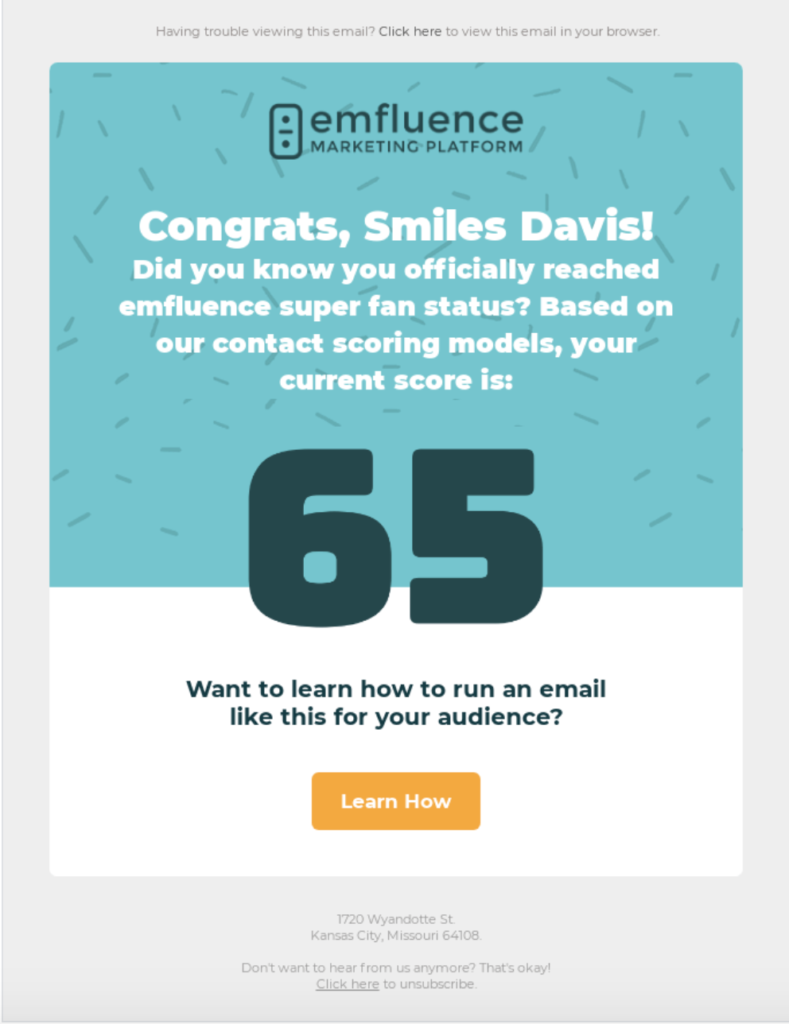
Again, it’s custom made for the individual lead and reflects the current activities they’ve engaged in, which in this case is when a reader reaches a contact score of 30 or more in the last 24 hours.
There are a ton of different possibilities when it comes to B2B email personalization, and the more creative you get, the better.
Check out this guide from Agile CRM for more ideas.
3. Use Between 50 and 125 Words of Text
Text length is a huge factor in determining email CTR.
You want to find the sweet spot where you adequately explain your offer, the benefits, and why readers should care.
But you don’t want to go overboard where you drone on and on, sending leads scrambling to unsubscribe.
According to recent data, “the ideal email copy length is between 50 to 125 words,” says Campaign Monitor, and this “typically results in response rates over 50%.”
In other words, you want to be brief but not too short. This tactic is statistically proven to boost engagement and increase CTR.
Case in point—this example from GoDaddy.
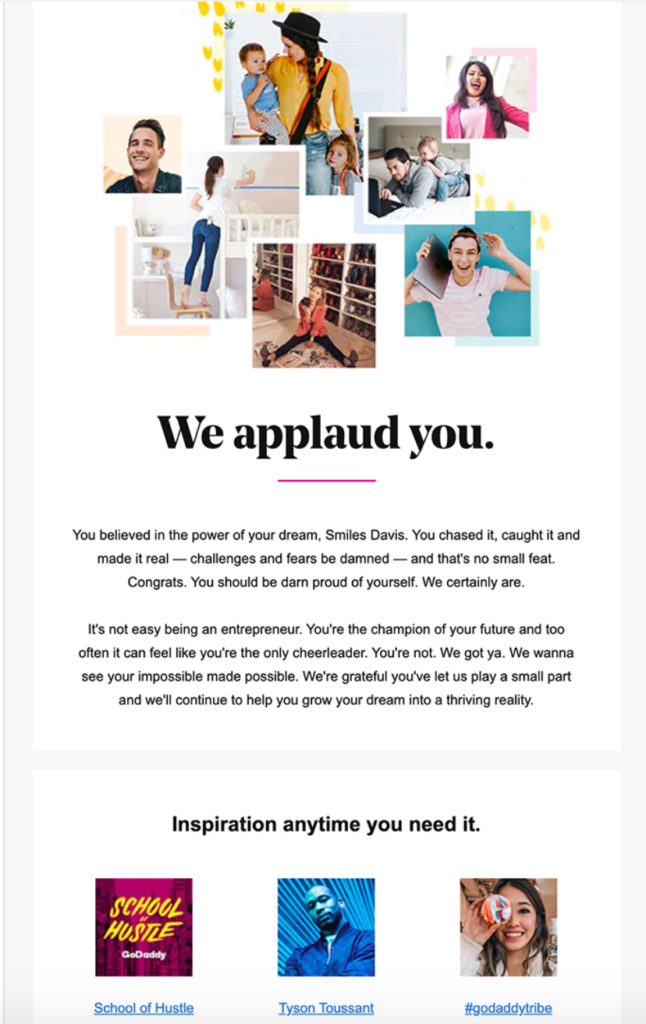
It clocks in at 102 words and provides readers with just the right amount of information they need without adding anything superfluous.
Also, notice how the text is broken up into digestible paragraphs rather than one big ugly block of text.
This B2B email serves as the perfect blueprint for using just the right length with copywriting and one you can borrow for your campaign.
4. Keep a Conversational Tone
A common mistake I see a lot of B2B brands making is speaking to leads with a dry, rigid, hyper-formalistic tone in their email copy.
And I get it.
They want to sound smart and competent and let leads know they’re professional.
Being perceived like this is obviously important, but you don’t have to sound stale to do so.
In fact, the best emails I get are from brands that don’t take themselves too seriously.
So, a better approach is to take a conversational tone where you create a dialogue with a reader and keep your email interactions fun and engaging.
Here’s a great example from Booz Allen Hamilton, a consulting firm with expertise in analytics, digital, engineering, and cyber.
Keep in mind that they work with businesses, government, and even military organizations, but keep the tone of this email light and personable.
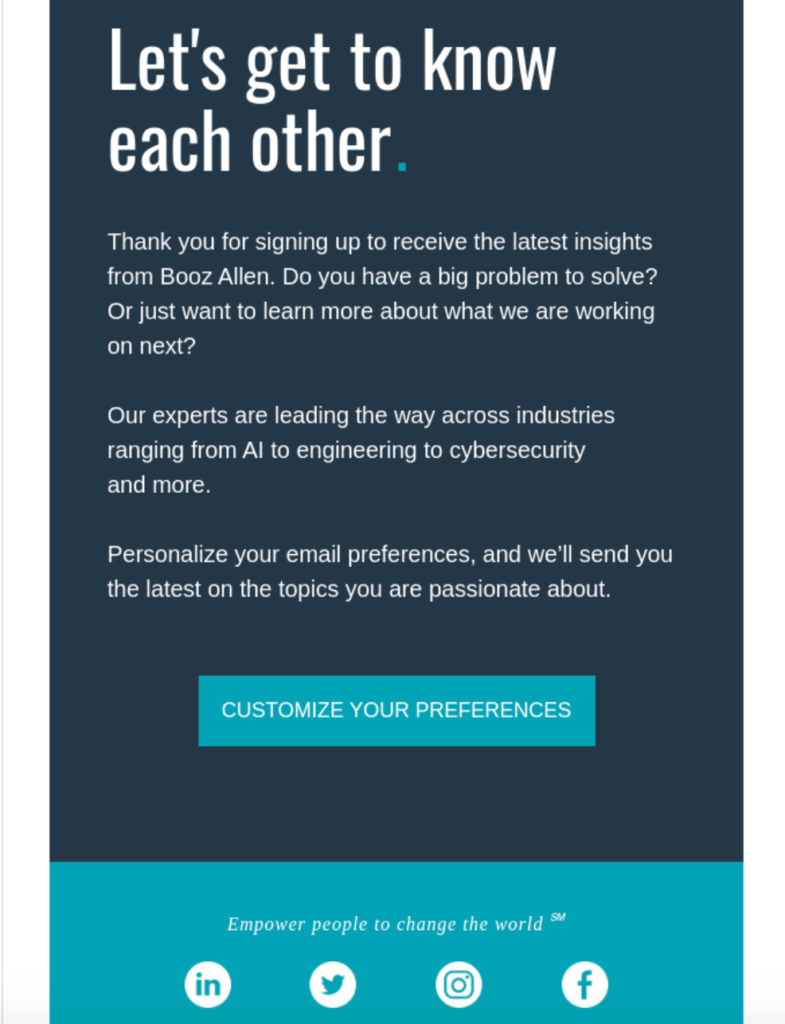
Starting it off with “let’s get to know each other” is the perfect way to break the ice with new leads and opens the door for rapport building.
Also, check out this example from online user journey and personalization tool, Yieldify.
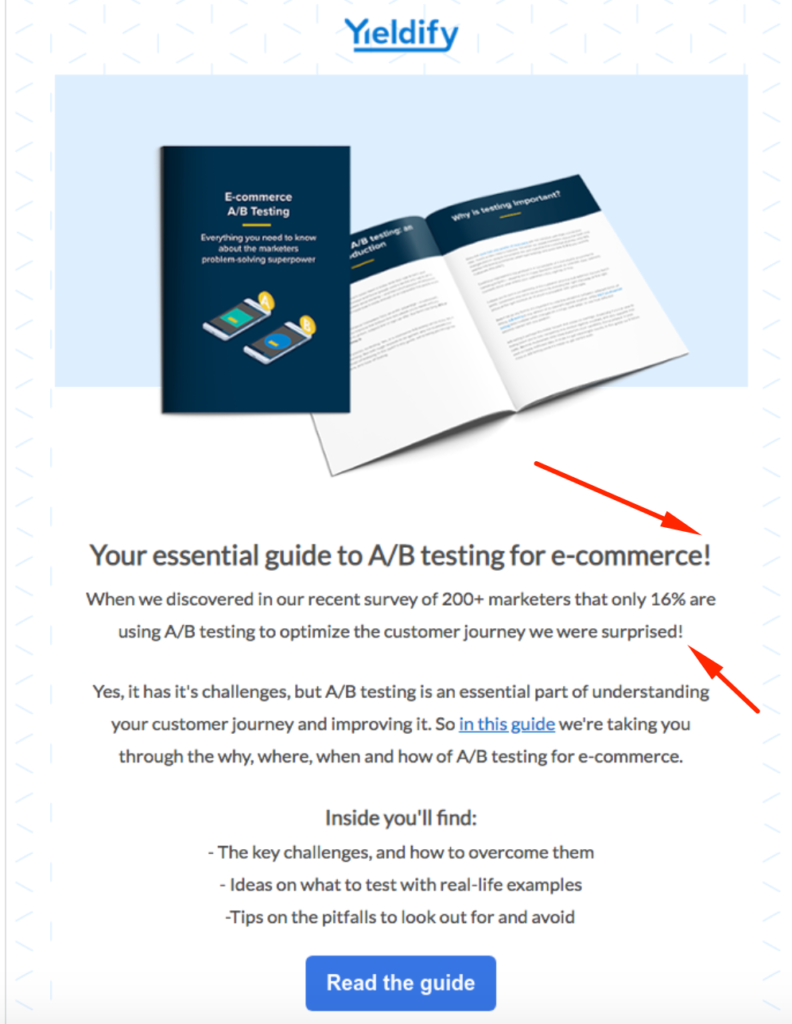
They show their enthusiasm with multiple exclamation points when promoting their guide to e-commerce A/B testing, which creates a fun, energetic tone.
When choosing the direction of your B2B email content, always make it a point to steer it in a conversational direction and avoid sounding like you’re writing an academic research paper.
5. Use 1 to 3 Images
Now let’s talk about visuals.
I think we can all agree that it’s important to use images in B2B emails.
After all, “32 percent of marketers say visual images are the most important form of content for their business.”
But just how many should you use?
A few years back, Constant Contact performed a major study that analyzed over 2.1 million emails, and they found that CTRs were highest for brands that used 1 to 3 images.
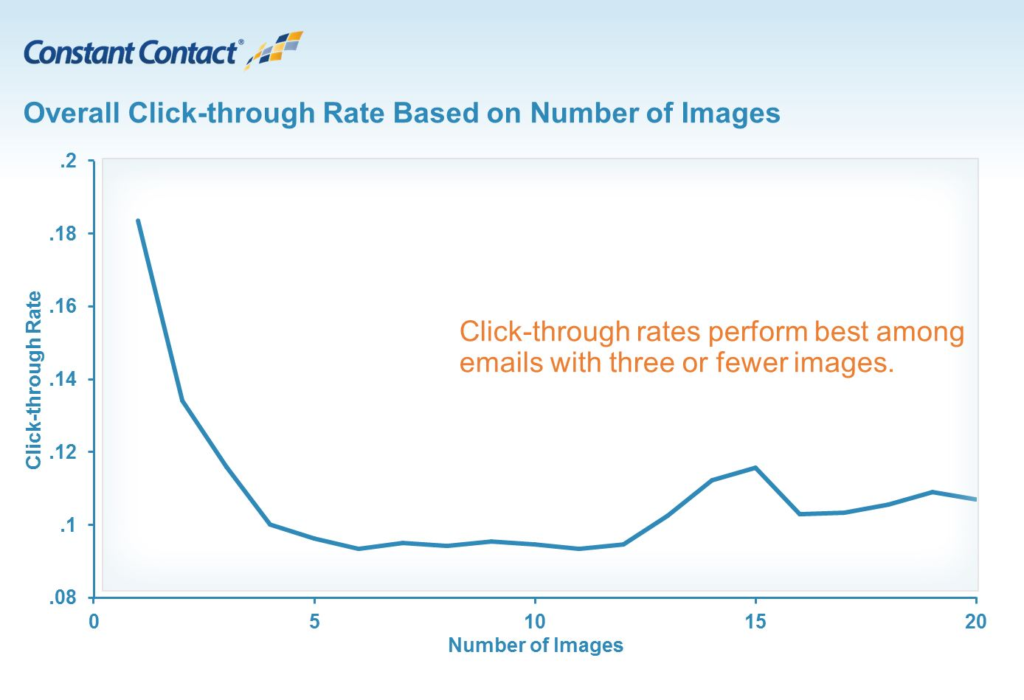
As you can see from this graph, the CTR is crazy high for these emails and they drastically outperformed those that used a higher number of images.
In fact, once it hits four images, the CTR basically levels out, indicating that B2B email subscribers respond to visuals but only up to a certain point.
Again, you want to hit the sweet spot and make your emails eye appealing but not bombard readers with excessive visual stimuli.
Here are a couple of examples of B2B companies that get it right.
First, there’s this one from Campaign Monitor, which promotes an infographic.
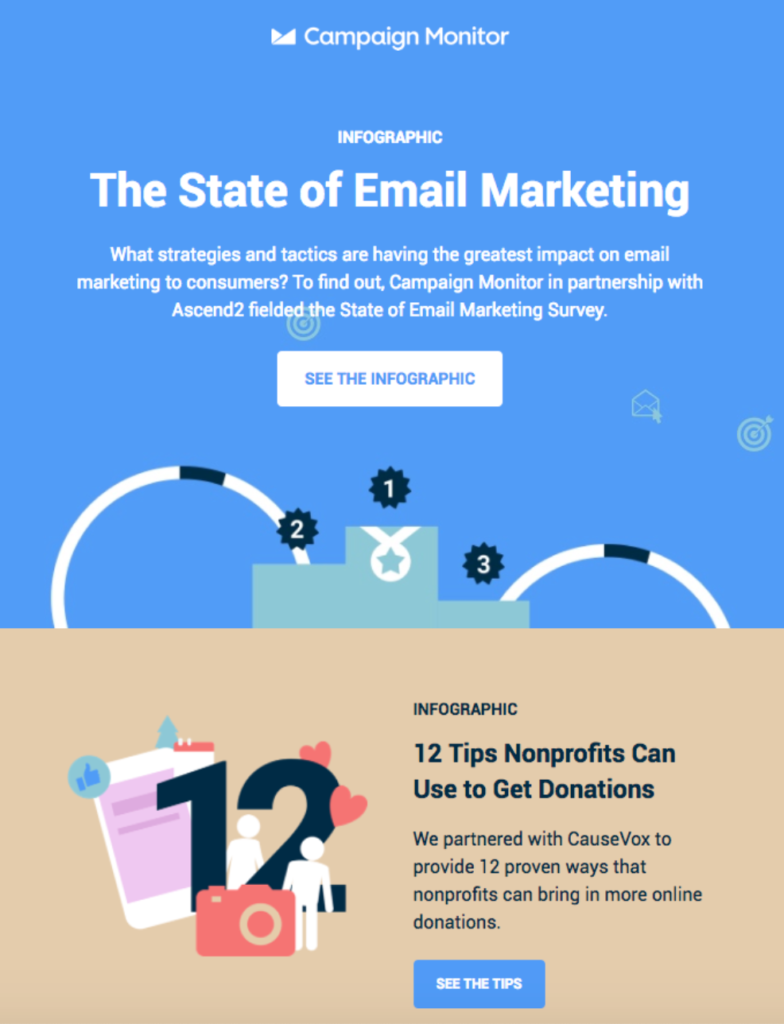
Second, there’s this one from Shopify, which features a webinar and some of their recent blog posts.
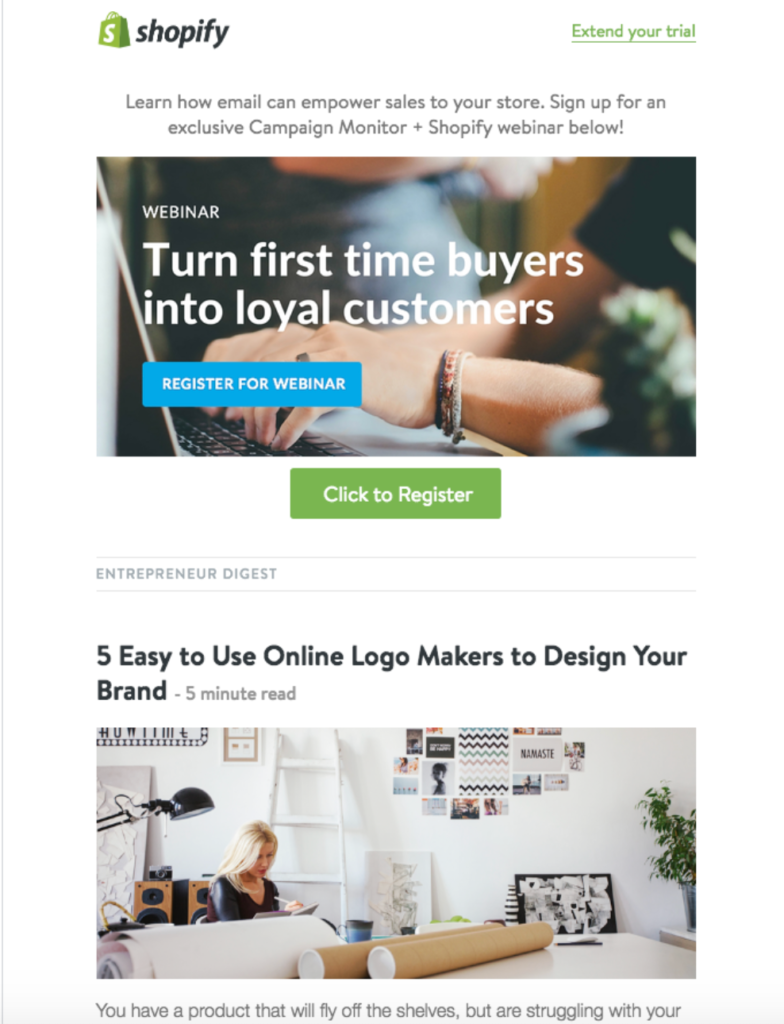
Both use two images, which according to the data from Constant Contact is the absolute best number in terms of CTR.
6. Make Sure Each B2B Email Answers 3 Key Questions
Now I need to discuss the three specific questions that must be answered for a B2B email to hit its mark.
They are:
- What are you offering?
- How will it help the reader?
- What should they do next?
This is essential for A) grabbing the reader’s attention and B) compelling them to take action.
Now let’s take a look at an example that does an excellent job at answering these three questions from Flywheel, a managed WordPress hosting site for designers and creative agencies.
With this email, Flywheel makes it crystal clear what they’re offering with the “Sale” header at the very top and the subheader that says, “This month only, get three months of Flywheel free with any new annual plan.”
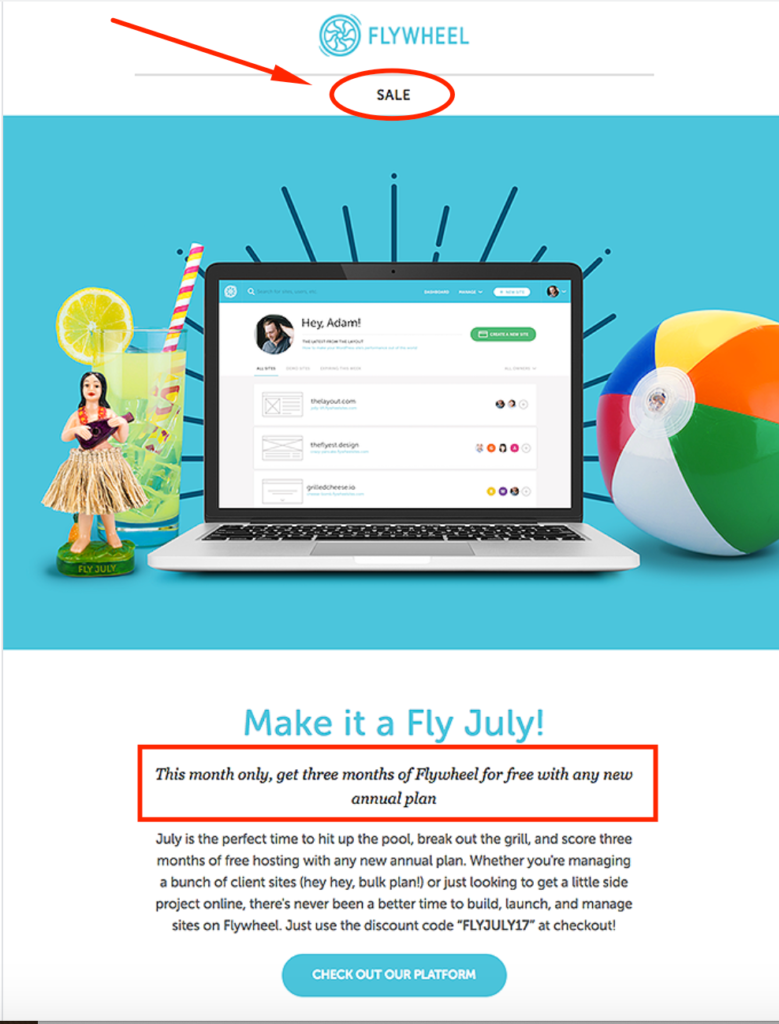
This leaves zero guesswork for the reader, and they can instantly tell what’s going on.
In terms of how it helps the reader, Flywheel includes this easy to digest section that explains what makes them different from competitors and the specific benefits that come along with using their service.
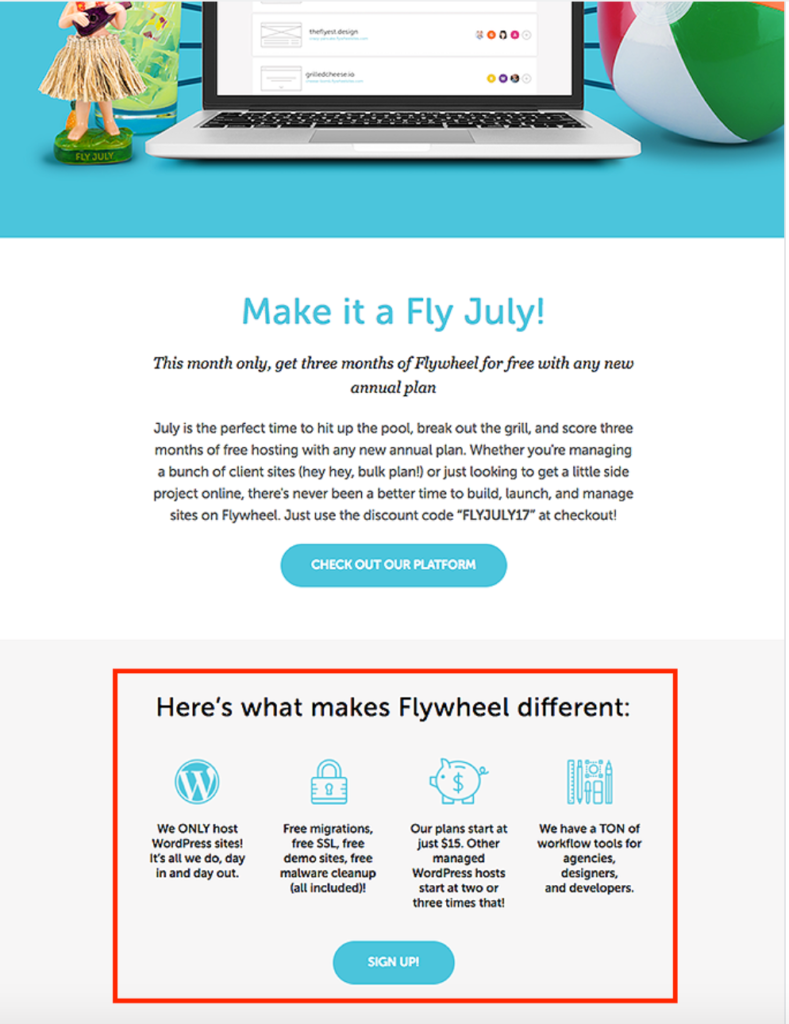
Again, the reader doesn’t have to sift through a bunch of information to figure what’s in it for them and why they should care.
Instead, they get the highlights with just a glance, which should pique their interest and get them to take the offer seriously.
In terms of what the reader should do next, Flywheel makes this ultra-clear as well with these CTAs.
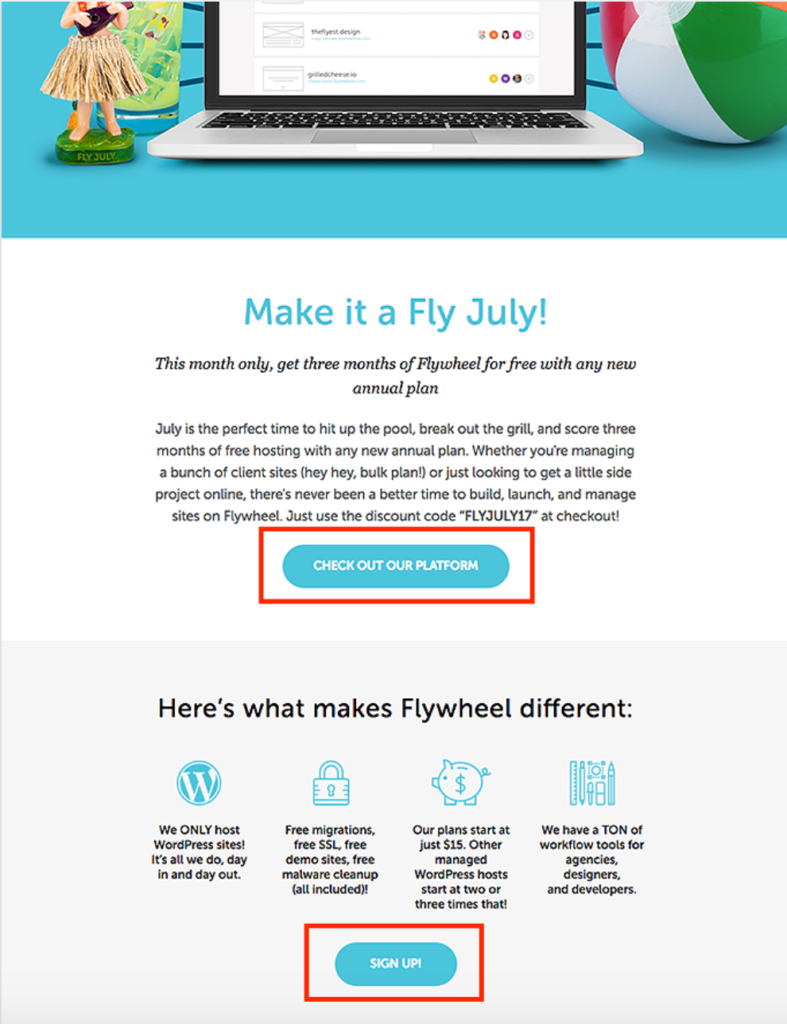
Immediately after the reader knows what’s being offered and what the benefits are, they can seamlessly click-through to the landing page and get signed up with Flywheel with ease.
The key is to help them move step by step throughout the process without any friction and not make them overthink it.
7. Send Between 1 and 5 Emails Per Month
The last of the B2B email marketing best practices I need to tackle is frequency.
You want to send out enough emails to stay on a reader’s radar, keep them engaged, and hopefully convert them into a customer.
But you don’t want to barrage them with too many emails and become a nuisance.
So again, it’s all about finding the right balance.
Ask 10 different email marketers what the optimal frequency is and you’ll likely get 10 different answers.
In-depth research from CoSchedule, however, found a specific range that tends to work best across the board for B2B companies and that’s “at least one email per month, and no more than five.”
To dive a little deeper, their research found that the largest percentage of B2B email marketers (37%) send 2 to 3 emails per month.
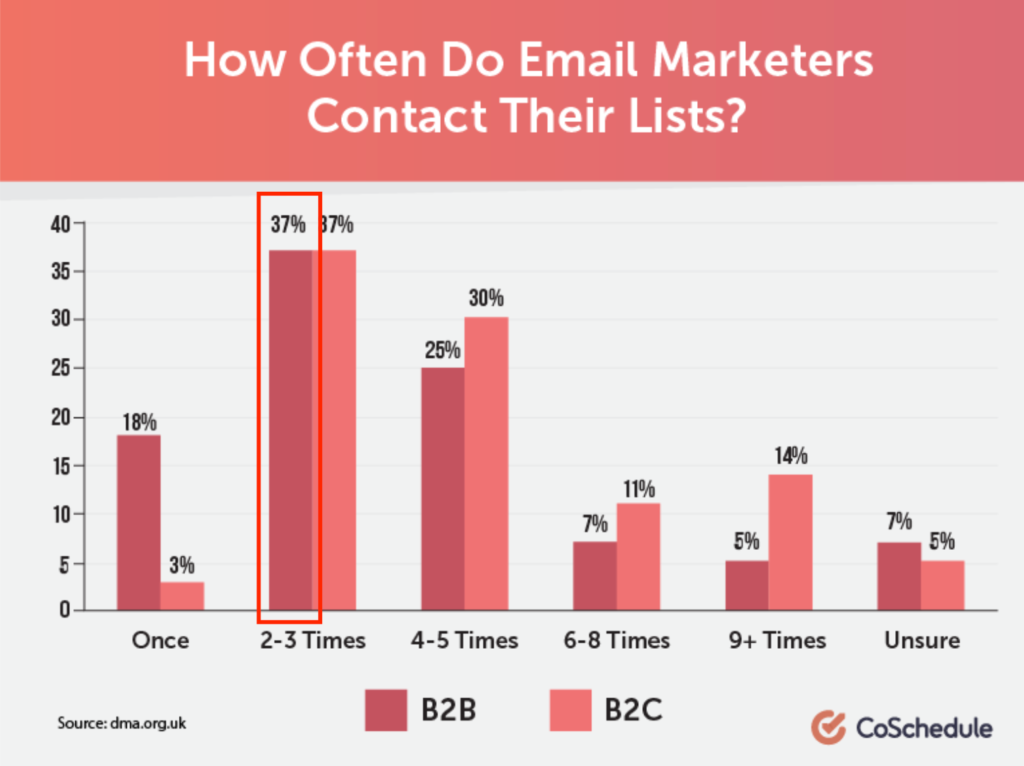
After that, a quarter sends out 4 to 5 emails per month.
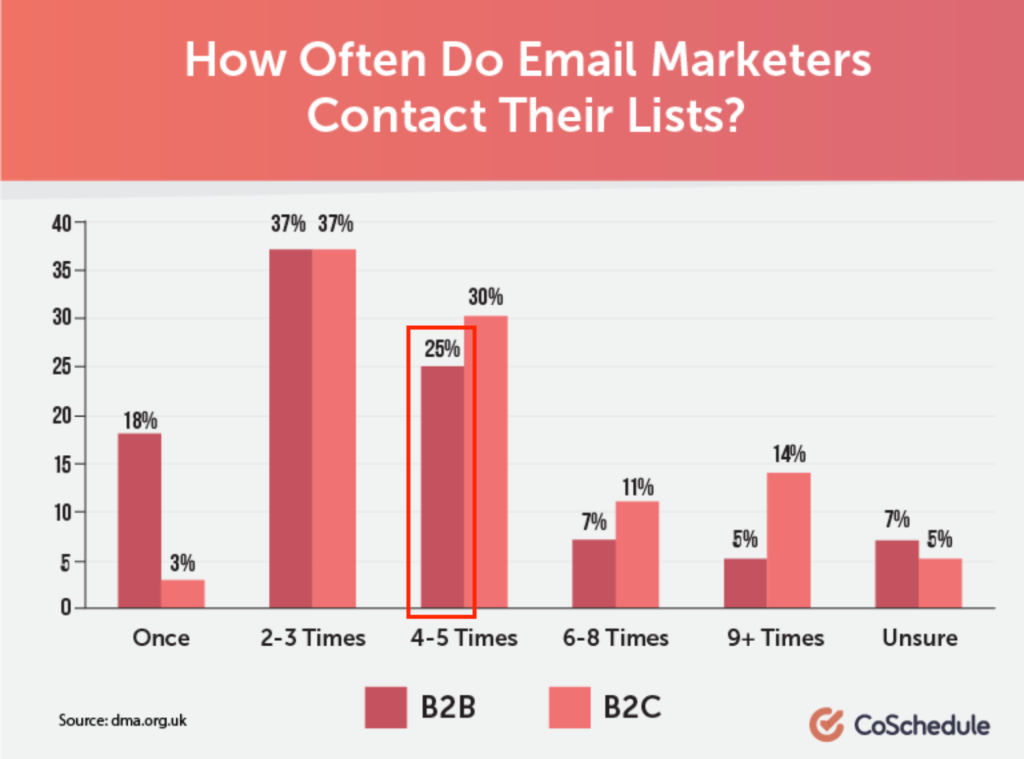
And 18 percent send out just one email per month.
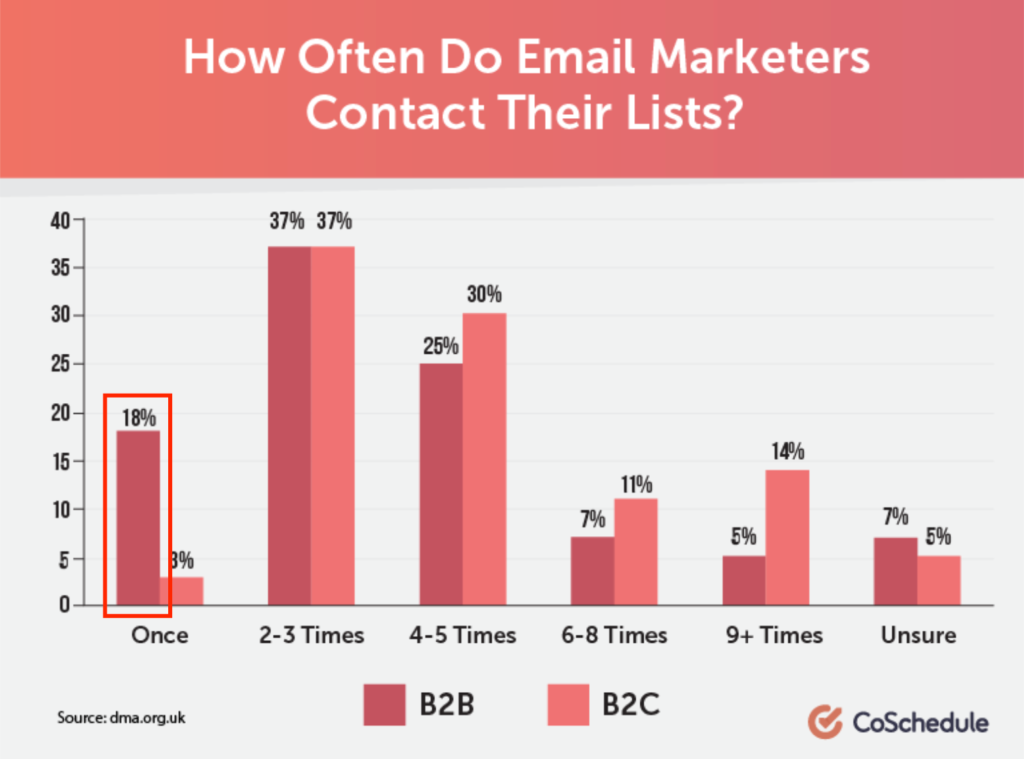
By these numbers, it’s clear that 2 to 3 emails per month is the most popular option, which means it should be a good starting point if you’re just getting going with your campaign.
Based on those results, you could either increase or decrease the volume until you find what works best with your subscribers.

Conclusion
Email marketing is the number one way for B2B brands to nurture leads.
It has been and continues to be an amazing channel for moving leads from the top of the sales funnel to the bottom, all the while building strong, lasting relationships.
But because of all of the variables that affect the success (or failure) of a campaign, it’s vital to understand best practices and rigorously follow them.
Of course, you’ll want to tweak your campaign and make adjustments over time, but following best practices should help you reach a baseline level of success.
As for specific B2B email marketing best practices to focus on, they include:
- Using a subject line between 28 and 50 characters
- Personalizing your email content and keeping it conversational
- Using between 50 and 125 words of text
- Using 1 to 3 images
- Answering three key questions—what are you offering? How will it help the reader? What should they do next?
- Sending out 1 to 5 emails per month

